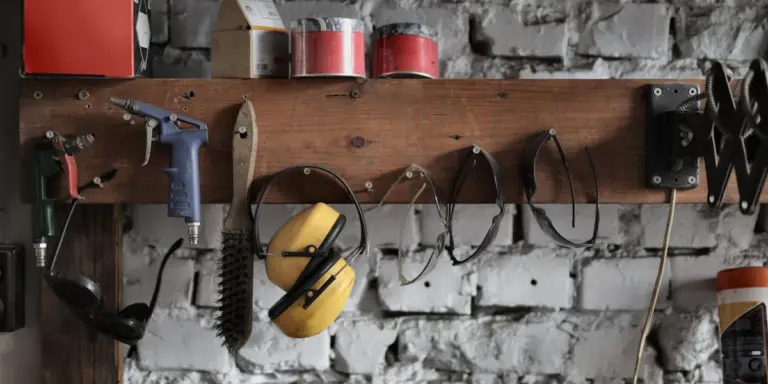Weatherproofing Windows with Hand Tools
Drafty windows are one of the most common sources of heat loss in a home, and they can also let in moisture, dust, and even unwanted noise. When I noticed that the area near my windows was constantly chilly despite the heater running, I knew it was time to take action. Weatherproofing windows with hand tools turned out to be a simple yet incredibly effective DIY project that required no fancy equipment and only basic materials.
If your home feels drafty or your energy bills are climbing, weatherproofing your windows can make a real difference. With the right approach and a few tools already lying around your toolbox, you can seal up those leaks and enjoy a cozier, more efficient home. Let me take you through the step-by-step process that worked for me and explain why this project is one of the most worthwhile upgrades for any DIYer.
Evaluate Your Windows for Leaks
Before grabbing tools or materials, I walked around the house on a chilly day with a candle in hand. Holding the flame close to the window frames, I could see where it flickered or bent inward—clear signs of air leaks. I also used my hand to feel around for cold air sneaking through the edges.
Identifying the trouble spots is key to weatherproofing windows with hand tools effectively. Some leaks were at the sash where the window slides, others were between the window frame and the wall, and a few were from worn-out caulk or deteriorated glazing.
By understanding where air was escaping, I was able to target the specific areas that needed sealing and skip over the ones that didn’t. It saved time and materials while making sure every effort counted.
Remove Old Caulking and Debris
The first tool I reached for was a utility knife. I gently cut along the edges of the existing caulk to loosen it. A small putty knife helped me scrape away the old, crumbling sealant from around the window frame. In a few spots, I used a screwdriver to dig out hardened material in tight corners.
Once the old caulk was removed, I vacuumed out the dust and debris, especially in the tracks and corners. This cleaning step is crucial. If you skip it, any new sealant or tape won’t stick properly.
Weatherproofing windows with hand tools starts with good preparation. Don’t underestimate how much difference a clean surface can make when you’re applying new materials.
Apply Fresh Exterior Caulk
I used a simple caulking gun—nothing fancy, just a metal-frame tool that fits standard tubes. I chose an exterior-grade silicone caulk that’s waterproof and flexible enough to handle temperature changes without cracking.
Holding the gun at a 45-degree angle, I slowly squeezed a steady bead along the gaps between the window frame and the siding. Then I smoothed it out with a damp finger for a clean finish. It didn’t take long, and the difference in both insulation and appearance was noticeable right away.
If you’re weatherproofing windows with hand tools, the caulking gun is your best friend. It may take a little practice to get smooth lines, but it’s one of the most effective tools for sealing outdoor gaps.
Install Weatherstripping on Moving Parts
Next, I tackled the window sashes—those are the parts that move when the window opens or closes. These spots can develop tiny gaps over time, letting cold air in even when the window appears shut tight.
I picked up a roll of self-adhesive foam weatherstripping. Using a tape measure, I sized each strip to fit along the inside of the window where the sash meets the frame. Then I peeled and pressed it into place, making sure there were no gaps or overlaps.
The only tools I needed were a tape measure and a pair of scissors, which made this one of the easiest upgrades in the whole process. Weatherproofing windows with hand tools doesn’t get much simpler than this step, and the payoff is immediate.
Use Rope Caulk for Seasonal Gaps
For windows that I don’t open during the colder months, I used rope caulk—a putty-like substance that you press into place. It’s removable, reusable, and doesn’t require a caulking gun or drying time.
I rolled it between my hands and pushed it into the seams between the glass and the window sash. In some areas, I layered two ropes for extra insulation. This worked especially well for older, single-pane windows that tend to rattle and leak more than modern ones.
If you’re looking for quick, non-permanent ways to improve insulation, rope caulk is a must-try. Weatherproofing windows with hand tools often involves creative solutions like this that require minimal effort and deliver solid results.
Re-glaze Loose Windowpanes
On one of my basement windows, I noticed that the glass was loose and the old glazing compound had turned brittle. Re-glazing was the best option.
Using a glazing tool, which looks like a flat putty knife, I removed the old compound and any loose glass. I wore gloves for safety. Then I rolled out new glazing putty and pressed it around the edges of the pane, smoothing it with the tool.
This step might seem like a bigger task, but it only took about 30 minutes and made the window feel brand new. If your windows are older and the glass is set in wood frames, don’t skip this step. Weatherproofing windows with hand tools can include repairs like this that add both durability and energy efficiency.
Insulate with Window Film
For added insulation during the colder months, I installed a window insulation kit that uses shrink film. The kit came with double-sided tape and a large plastic sheet.
I measured and cut the film to size using scissors, applied the tape around the inside frame, and pressed the film into place. Then I used a hair dryer to gently heat the film until it shrank tight, forming an almost invisible barrier.
This was the first time I used this method, and I was surprised by how much warmer the room felt afterward. It also helped eliminate minor drafts that foam or caulk couldn’t fully stop. If you want a bonus layer while weatherproofing windows with hand tools, window film is a smart choice.
Add a Window Sill Draft Blocker
In one of my rooms, cold air seemed to settle right on the window sill. I sewed a simple draft blocker using an old towel and filled it with rice. You can also use socks, fabric scraps, or even pool noodles wrapped in cloth.
I laid it across the bottom edge of the window, right where the sash meets the sill. It stopped the draft in its tracks and looked tidy enough that I left it there all season. Sometimes the most effective solutions are the simplest ones.
Weatherproofing windows with hand tools can involve a bit of sewing or repurposing household items, and that’s what I love most about it—it encourages you to be resourceful.
Paint or Seal Bare Wood for Longevity
After making all these improvements, I wanted to ensure that the wooden frames would hold up over time. I used a simple paintbrush to apply a coat of exterior primer followed by paint on exposed areas. Where I didn’t want to paint, I applied a clear wood sealer using a rag.
This prevents water infiltration, which can lead to rot, mold, or warping over time. It’s a simple way to extend the life of your efforts, especially when you’ve put in the time to weatherproof windows with hand tools already.
Maintain and Recheck Each Season
One final point I’ve learned from experience is that weatherproofing isn’t a one-time job. Each fall and spring, I check the seals, look for cracks, and reapply materials where needed. It doesn’t take long, and it keeps my home protected year-round.
Routine maintenance ensures that everything you’ve done stays intact and continues to work. Make it part of your seasonal DIY checklist, and your home will always be one step ahead of the weather.
Final Thoughts
Weatherproofing windows with hand tools is not just a cost-effective DIY project—it’s a long-term investment in your comfort and energy savings. I managed to seal up my home using only basic materials and tools like a utility knife, caulking gun, putty knife, scissors, tape measure, and a few clever hacks.
Whether you’re dealing with a leaky old window or just trying to lower your heating bill, these techniques work wonders. From rope caulk to shrink film, from weatherstripping to handmade draft blockers, you have more options than you might think.
Taking the time to weatherproof your windows not only makes your space warmer and quieter but also gives you a sense of accomplishment. It’s one of those satisfying DIY jobs where every tool you use makes a noticeable difference. So grab your gear, pick a window, and get started—because weatherproofing windows with hand tools is one of the smartest upgrades you can make before the next seasonal shift hits.







